We recently connected with Kalani Tonga and have shared our conversation below.
Kalani, looking forward to hearing all of your stories today. Let’s jump to the end – what do you want to be remembered for?
I came across an idea recently that changed my mindset about the work I do and its meaning. A speaker at a conference I attended said, “We should be working today on becoming a good ancestor.” Since hearing this, I’ve been working to incorporate this ideology into all aspects of my life, including into my artwork and my business practices, and in working to become a good future ancestor for my children and my children’s children, I think one of the main things I’d like to leave behind is to help my own community feel seen and understood. I am educating myself and striving to find success in my own field so that my posterity will have a visual and tangible pathway to follow toward similar success.
I hope that my struggles will bear fruit that will push the starting line forward so that my family and community are able to move forward from a starting point that is further down the road than where I began. I hope that they are able to see in me an example of what grit and hard won knowledge can do for a community. I would love to be remembered as a person who brought my community with me on my road to success, and I hope to find continued success and growth.
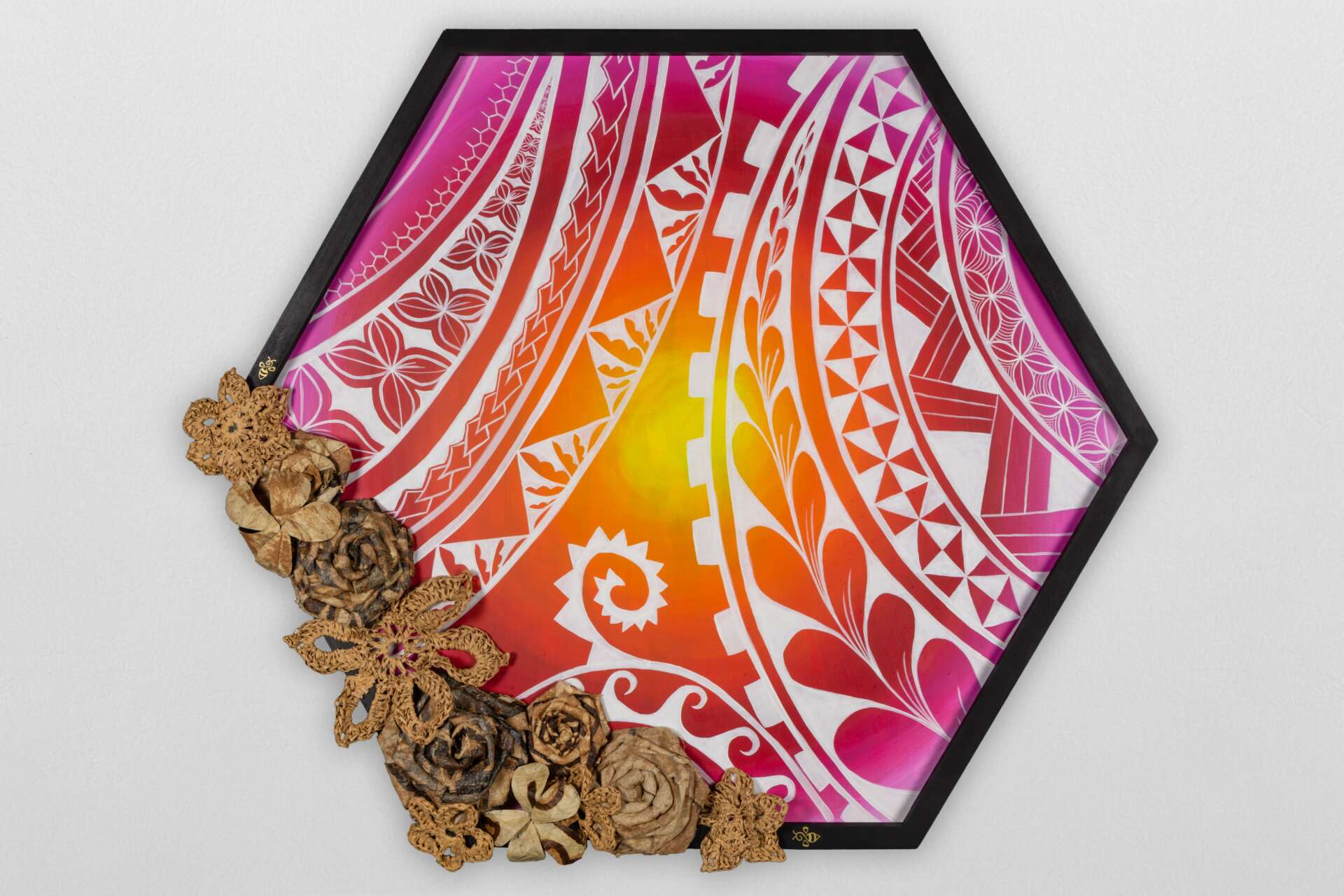
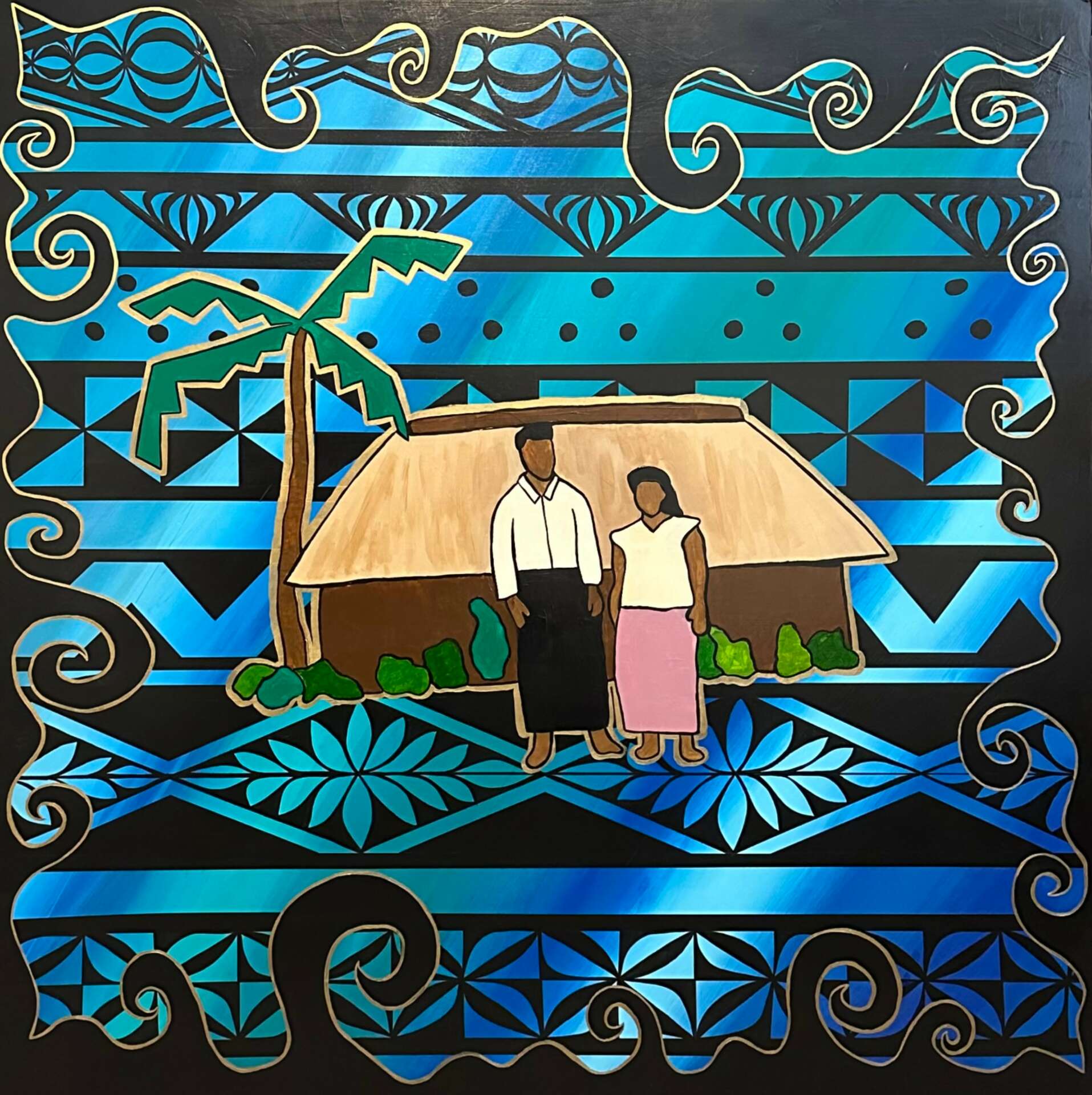

Great, appreciate you sharing that with us. Before we ask you to share more of your insights, can you take a moment to introduce yourself and how you got to where you are today to our readers.
My name is Kalani Tonga, and I am a hafekasi (biracial Tongan/Swedish) artist and published author living in Saratoga Springs, Utah. I am an acrylic painter, muralist, and multimedia artist and the owner of Kalani Tonga Designs, as well as the director of Pasifika Enriching Arts of Utah (PEAU), a nonprofit organization geared towards helping Pacific Islanders and members of marginalized communities develop and monetize their artistic talents. I take traditional Polynesian patterns and use them in unusual ways and with a non-traditional color palate. My murals are in Millcreek (Walmart), on the Jordan River Trail in South Jordan, and in Midvale, and I was one of 30 Utah artists commissioned to participate in the Chase Home Museum’s New Beehive exhibit. The State of Utah purchased my New Beehive piece for its 123 year old private Alice Merrill Horne art collection. I was also awarded a fellowship by the Utah Division of Arts and Museums and was one of the artists chosen to represent the culture and history of Salt Lake City in the Life on State project.
I got into art kind of by accident through my work with a nonprofit serving Pacific Islanders called PIK2AR, or, Pacific Island Knowledge 2 Action Resources. I was serving in a peer to peer support facilitator role, and we partnered with Art Access, another nonprofit, to do some holistic healing through art. I started painting during these partnered sessions, and people began showing interest in my work and buying it. Long story short, in 2021 my husband passed away unexpectedly, and overnight I became the sole provider for myself and my five children, and out of necessity I turned my very part time art practice into a business that has help my little family afloat since my husband’s death.
I currently create custom artwork, design digital artwork for apparel, make jewelry and other merch using my artwork, and I also paint murals. I love painting and would someday like to focus exclusively on the fine art piece of my business, but, I am very grateful, too, that I have been able to diversify my products to meet the needs of my clients, which, in turn, has allowed me to provide for my family after the devastating loss of our primary provider and husband/father.
I’m proud of the way that I have been able to take traditional Pacific Island patterns and motifs and create works that the mainstream community can enjoy, and I hope to be able to continue growing as an artist and develop new work with mass appeal. I hope to bring the flavor of the Pacific Islands to the masses in a culturally relevant and respectful way.
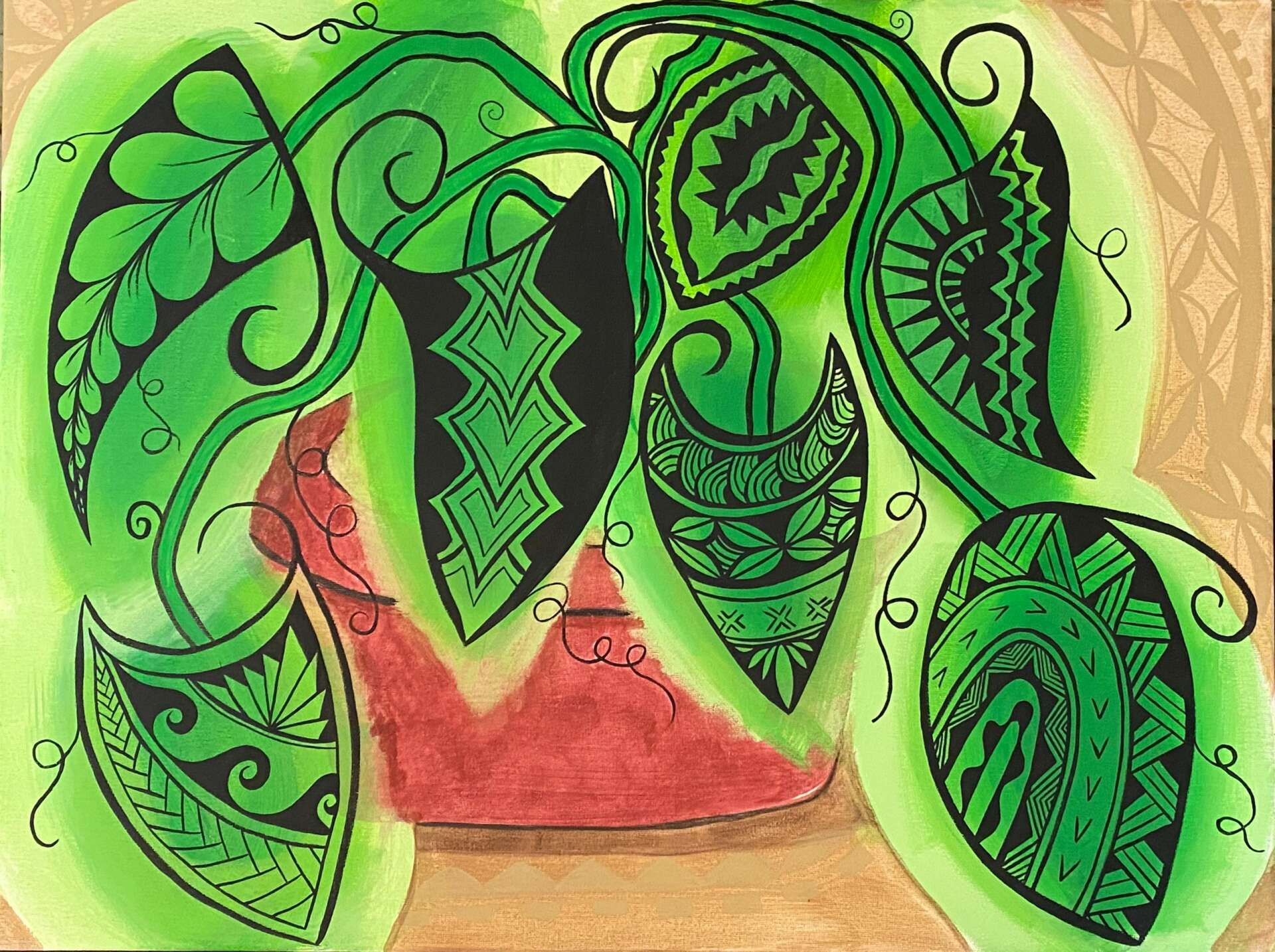
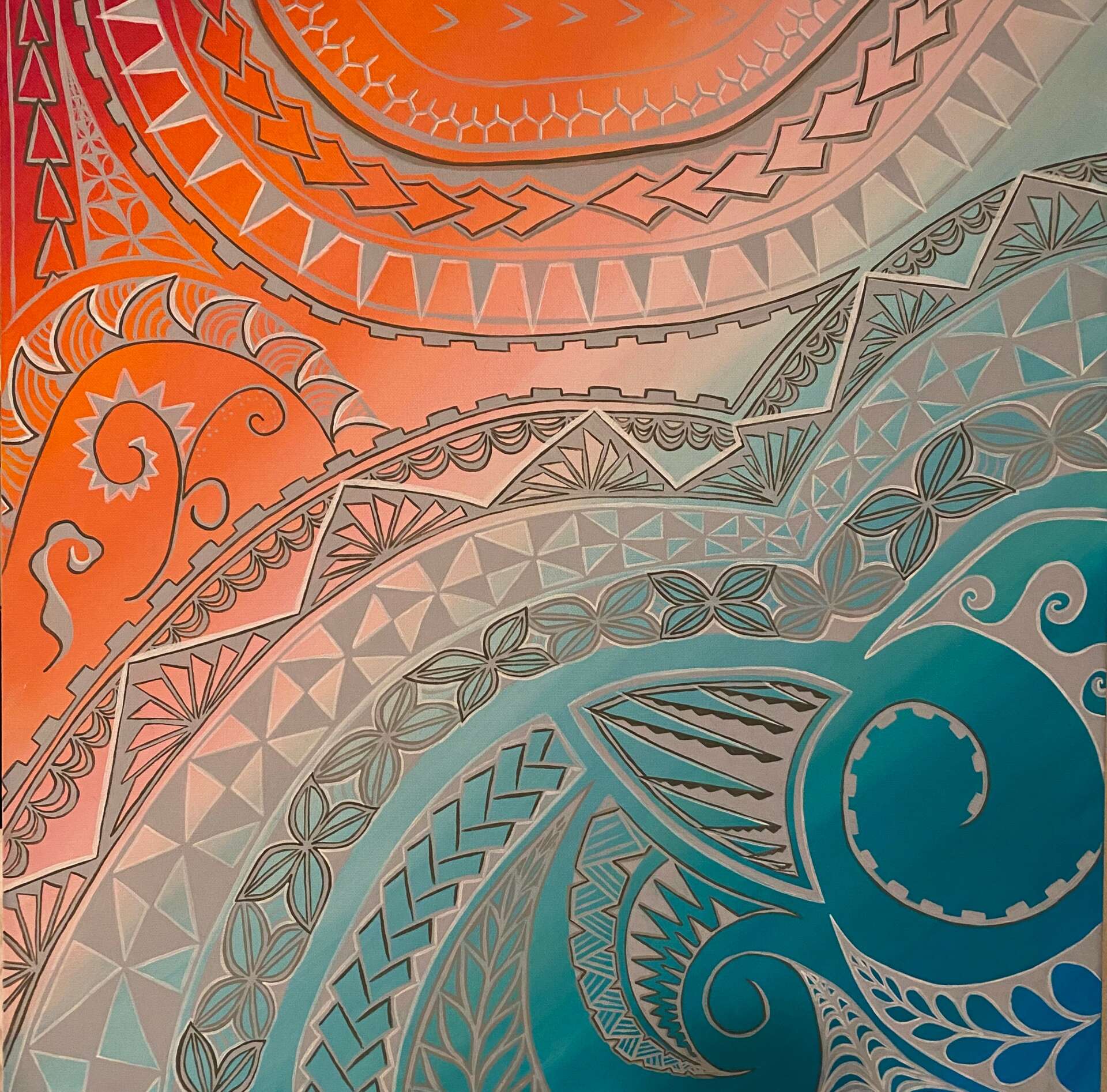
How did you put together the initial capital you needed to start your business?
I initially had no interest in starting my own business, but because of the passing of my husband I was forced into the role of being the primary provider for my family of six. I knew I needed to monetize my talents and skills, but I didn’t quite know how to figure out the business side of being an artist, so I went to the Pacific Island Chamber of Commerce to seek assistance. They led me to one of their partners, the IRC (International Rescue Committee), who helped me find a $10,000 business loan that I applied for and received. I used this initial capital to purchase equipment and supplies to start up my business, and this infusion of capital gave me the resources and confidence to become a functioning and profitable business.
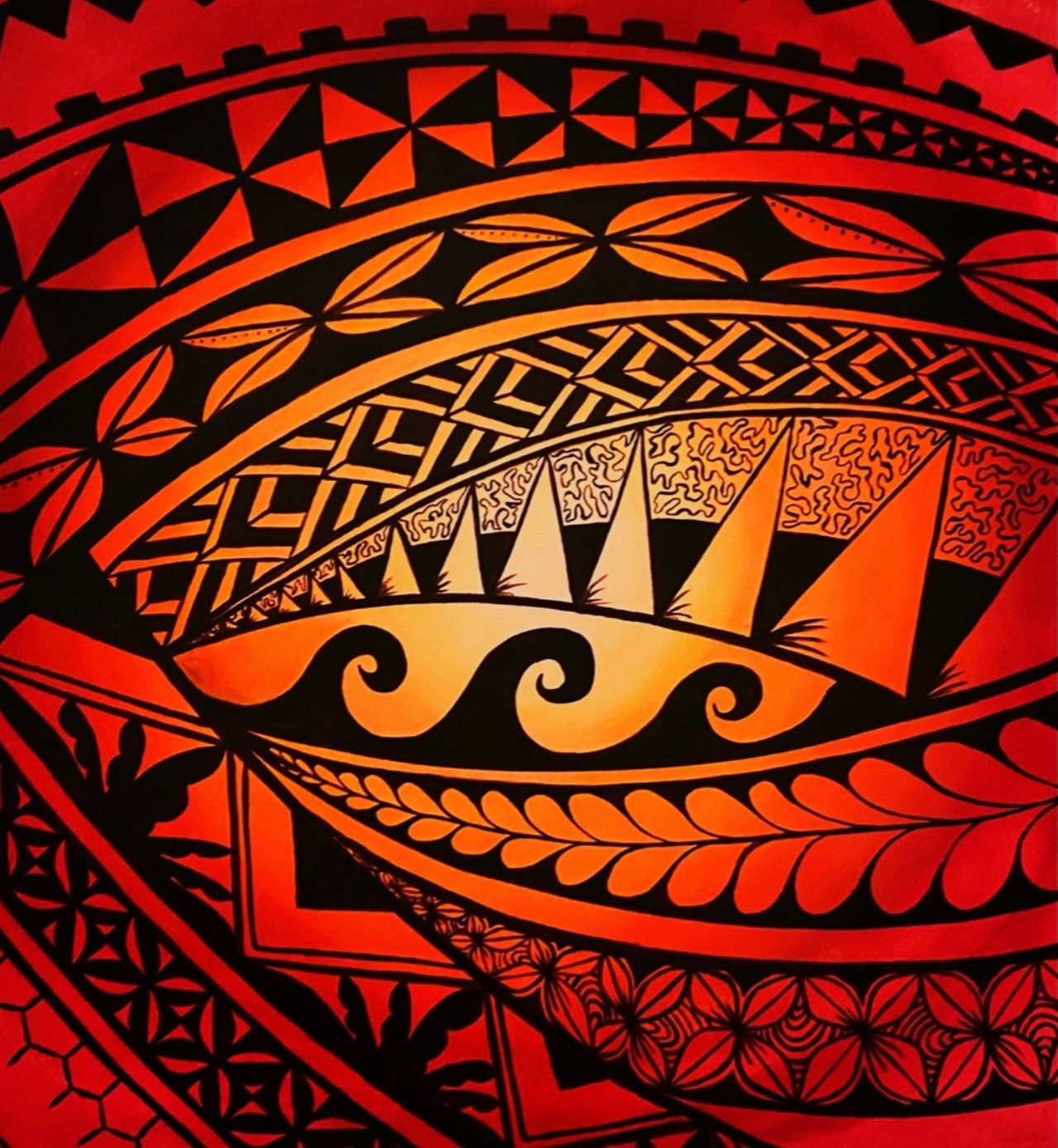

How about pivoting – can you share the story of a time you’ve had to pivot?
I studied history in college and was a high school history teacher for the first part of my working life. It was a great job with decent pay and good benefits, but my kids had some unique needs that required more attention than I could reasonably give them while still teaching, so I needed to pivot to accommodate our family’s special circumstances. I played volleyball in college, so I began booking private volleyball lessons to supplement our family’s finances and make up for the income I lost when I quit teaching. This gave me the flexibility I needed to care for my children, and also gave me the freedom to set my own schedule and make money on the side.
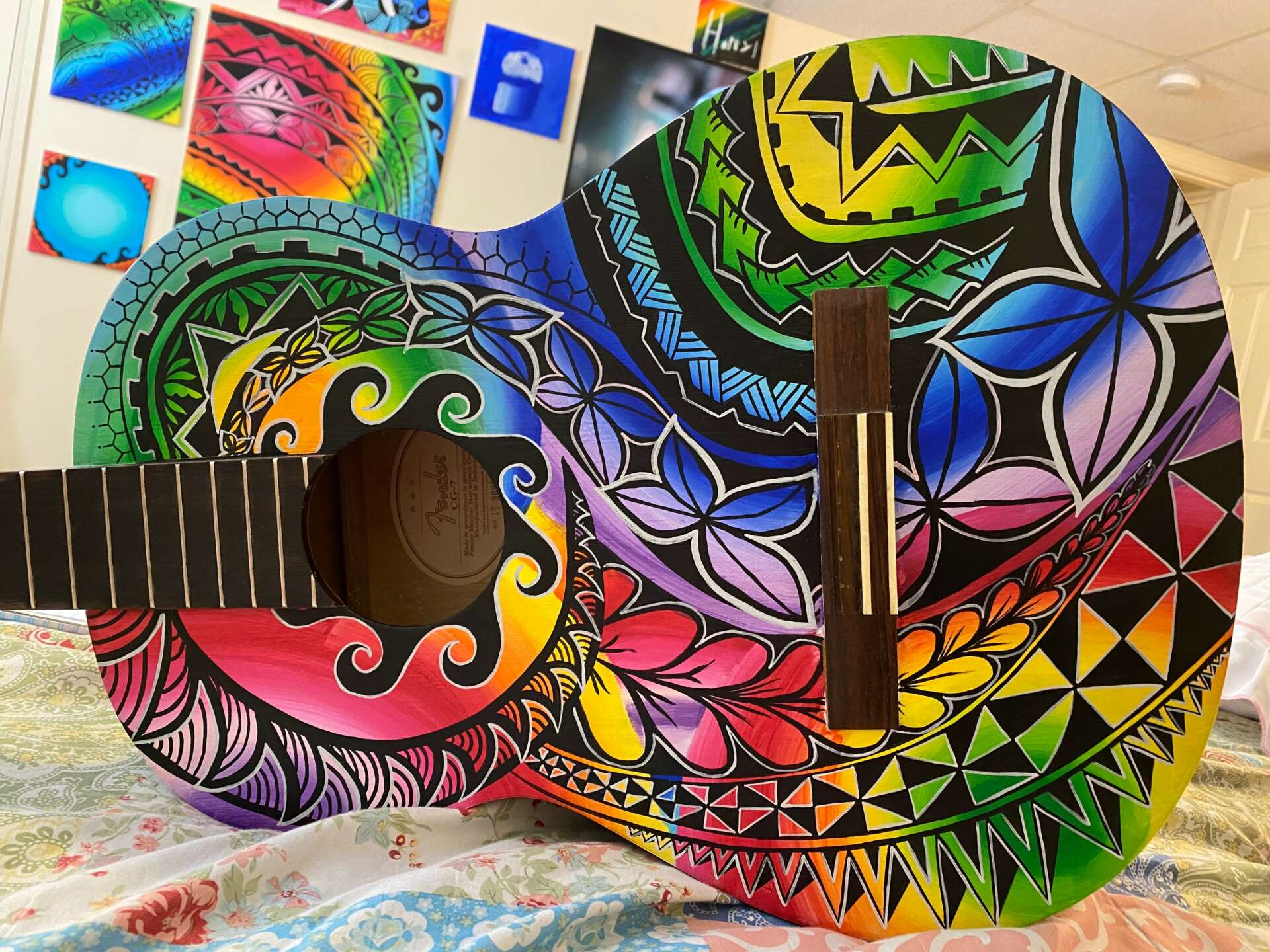
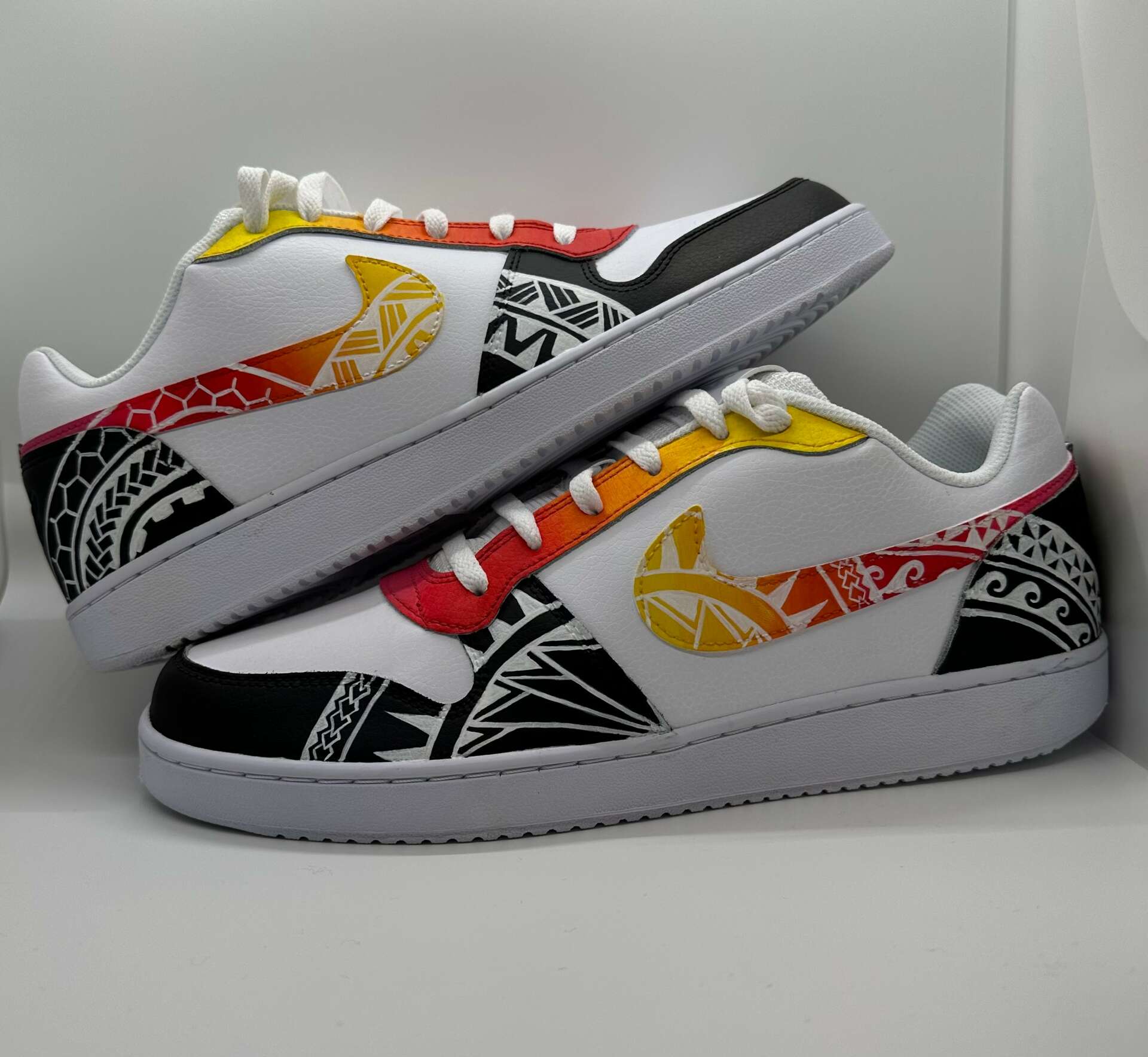
Contact Info:
- Instagram: @kalanitonga.designs
- Facebook: Kalani Tonga Designs
- Other: tiktok: @kalanitongadesigns


